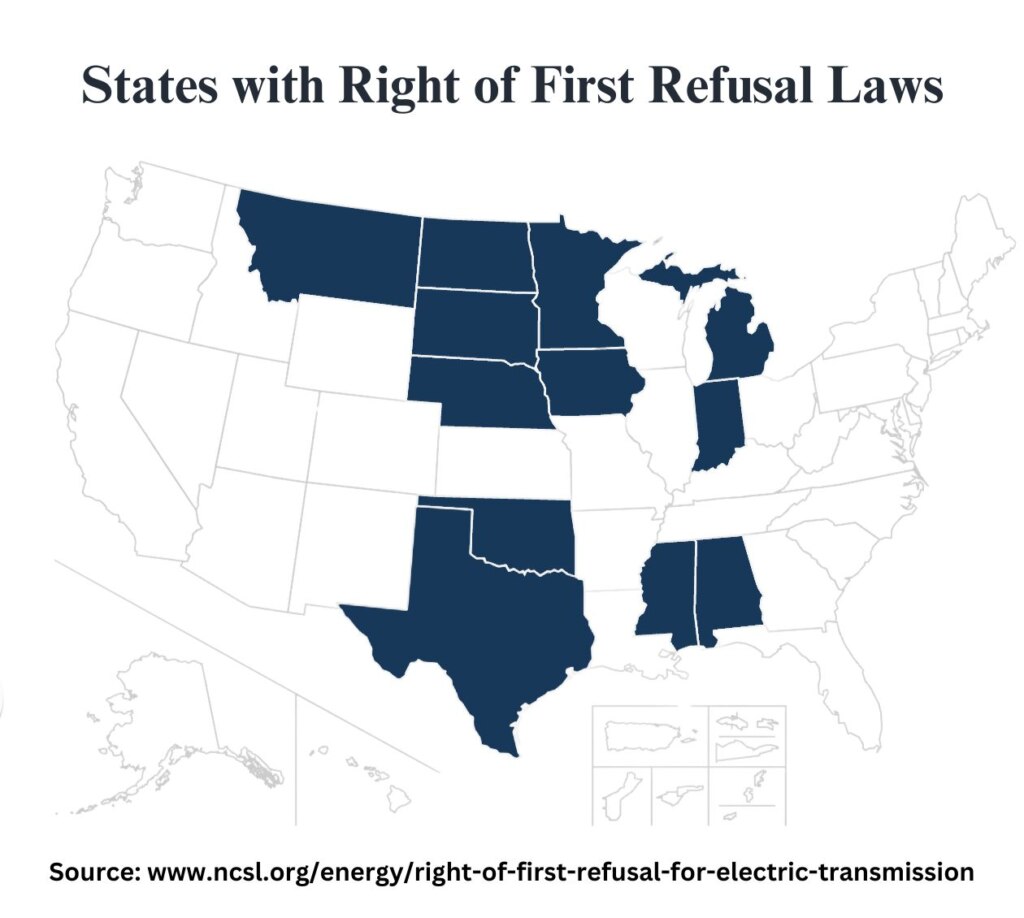ROFR: Holding Back Montana’s Grid
"Despite clear evidence of the harm caused by ROFR policies—and their repeal at the federal level—12 states, including Montana, continue to enforce these anti-competitive measures."
Across the nation demand for electricity is skyrocketing. Some projections are estimating the energy demand could rise in the northwestern United States by as much as 30% over the next 10 years. Montana is no exception, growing electrification of the economy has increased demand forecasts. However, meeting this rising demand requires more than just increased power generation; it also necessitates a significant build-out of transmission infrastructure to efficiently deliver electricity from its source to end users. Without adequate investment in modernized and expanded transmission lines, even the most ambitious power generation projects will fail to meet rising demand.
Unfortunately, the monopolistic nature of Montana’s energy utilities means there is little incentive to build out our grid quickly and efficiently. To make matters worse, some government policies actually prevent energy competition at the expense of consumers.
One example of a policy that stifles competition is the Right of First Refusal (ROFR). Similar to the Soviet-style ‘certificate of need’ regulations for healthcare—which Montana recently repealed—ROFR policies give preferential treatment to incumbent utility companies at the expense of consumers.
Here’s how ROFR works: when a new electric transmission line is proposed, the incumbent utility company is granted the exclusive first opportunity to construct, own, and operate the line. This eliminates competitive bidding processes that could lower costs, increase efficiency, and encourage innovation.
The negative consequences of this policy are significant. In fact, the federal commission responsible for overseeing transmission policy stated in its 2011 rule notice eliminating ROFR at the federal level that “the existence of federal rights of first refusal may be leading to rates for jurisdictional transmission service that are unjust and unreasonable.” This is further supported by studies, which show that introducing competitive bidding for transmission line projects can achieve average cost savings of 20% to 30%.
Despite clear evidence of the harm caused by ROFR policies—and their repeal at the federal level—12 states, including Montana, continue to enforce these anti-competitive measures.

Adopted in 2017, Montana’s ROFR policy applies to transmission lines built after the law’s adoption, located in areas included in the Midwest Reliability Organization, which covers the eastern and northeastern regions of the state. The policy applies to projects approved for construction by a federally registered planning authority and planned to interconnect with an incumbent utility’s existing transmission facilities.
Since its passage, there have been efforts to expand the scope of ROFR to cover more of Montana. Most recently, a 2023 bill proposed eliminating the limitation of ROFR to the Midwest Reliability Organization and would extend its application to the entire state. As efforts to broaden ROFR are likely to continue, it becomes increasingly important to consider how such policies affect Montana’s ability to leverage its unique energy landscape and meet the demands of a growing energy market.
ROFR is particularly harmful in Montana due to the state’s vast geographic size and diverse energy resources. Whether it’s energy generated from coal and wind in the east and central regions or hydroelectric power in the west, nearly all of Montana’s electricity must travel extraordinary distances on transmission lines to reach end users.
The importance of transmission lines in Montana becomes even more apparent considering the state exports a significant portion of its electricity—sometimes as much as 50% of all energy generated.
While out-of-state demand for Montana’s renewable energy is likely to continue growing—bringing overall benefits to the state—it also presents challenges. Transmission lines will play an increasingly critical role, but without mechanisms to encourage competition, the potential benefits of exporting Montana’s energy could be undermined by rising costs passed on to consumers.
Whether it is used in-state or out-of-state, Montana’s abundant energy resources hold the key to unlocking enormous economic opportunities. Montana’s electricity, generated from reliable power sources like coal, natural gas, and hydro—combined with its growing renewable energy portfolio—can power critical mineral mining, attract advanced manufacturing, and support data centers driving cutting-edge technologies. These industries have the potential to create good-paying jobs, diversify our economy, and position Montana as a leader in energy and innovation. But to realize this future, state lawmakers must address policies like ROFR that stifle competition and drive up costs for ratepayers.
